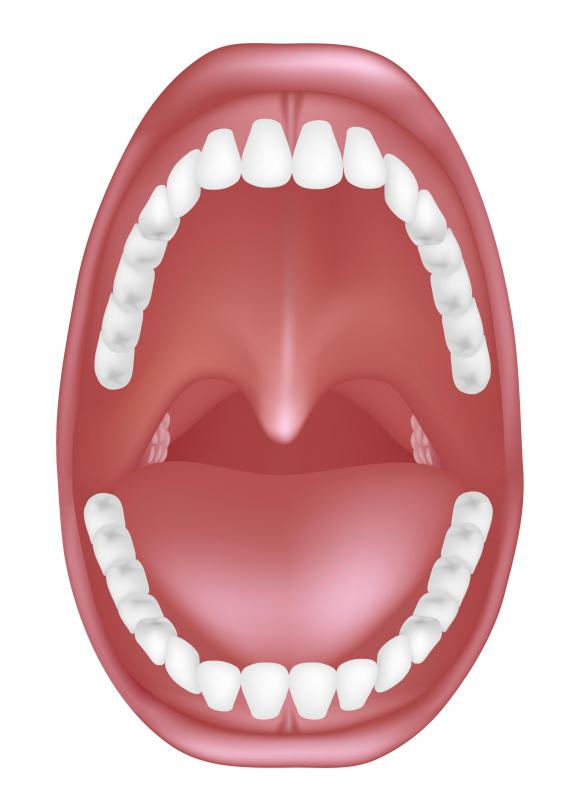At WiseGEEK, we're committed to delivering accurate, trustworthy information. Our expert-authored content is rigorously fact-checked and sourced from credible authorities. Discover how we uphold the highest standards in providing you with reliable knowledge.
What are the Different Types of Oral Cavity Cancer?
The oral cavity is defined as the portion of the body that begins with the lips and ends with the front of the tonsils. Only five percent of cancers reported each year occur in the head and neck area, but of these, a full 30 percent occur in the oral cavity. Cancer that occurs in this area are referred to as oral cavity cancer.
The oral cavity has a number of different types of tissue, with the result that there are several different types of oral cavity cancer. Some of the specialized types of tissue include the inside of the lips, the salivary glands, the jaw, the hard palate, the teeth, the tongue, and the lining of the mouth, and while some types of oral cavity cancer are particular to one type of tissue, others can be found in multiple areas.

Squamous cell carcinoma, for example, which affects the lining of the oral cavity, is the most common oral cavity cancer, making up 95% of all the cancers in this area. A carcinoma is a malignant cancer that stems from epithelial cells, those found in the lining tissues of the body. Squamous cell carcinoma is differentiated into subgroups based on the similarity of the cells to normal lining cells. The types are: poorly differentiated, moderately differentiated, and well differentiated.

Several oral cavity cancers, such as adenoid cystic carcinoma and mucoepidermoid carcinoma, are particular to the salivary glands. Mucoepidermoid carcinomas make up 35% of salivary gland malignancies, and although this is their primary site, they have also been found in atypical locations including the thyroid gland, the lungs, the Eustachian tube in the ear, and the breast. Similarly, adenoid cystic carcinoma, abbreviated AdCC, though usually grouped with salivary gland cancers, also can arise at a number of other sites. Both these cancers are referred to as adenocarcinomas because they arise from glandular tissue.

Sarcomas, which are cancers of the connective tissue, are also found in the oral cavity. These tumors may arise in a variety of oral tissues, including muscle, fat, bone, and cartilage. Sarcomas are identified both by the tissue in which they originate and a grade that indicates their likelihood of metastasis and how aggressively they should be treated.
Melanomas, tumors of the melanocytes, are skin cancers. Melanomas of the oral cavity are not common, but do exist. Unlike the melanomas linked to exposure to the sun, the cause of oral malignant melanoma has not been established, with no proven links to tobacco, alcohol, oral hygiene or any other specific cause.
AS FEATURED ON:
AS FEATURED ON:













Discussion Comments
It is interesting that there is no link between oral malignant cancer and tobacco or alcohol use, since it is a leading cause of cancer of the mouth.
Post your comments